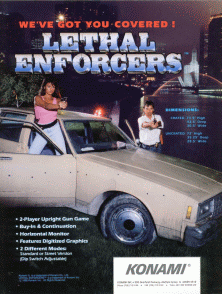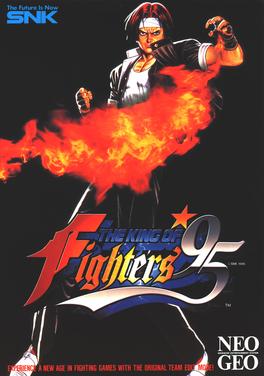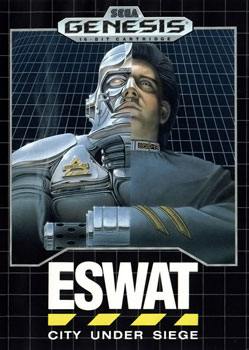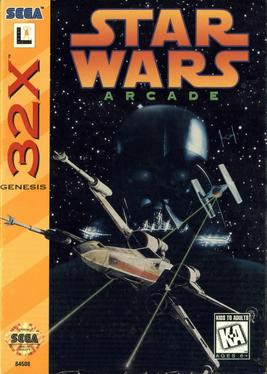
The Neo Geo CD is the second home video game console of SNK Corporation's Neo Geo family, released on September 9, 1994, four years after its cartridge-based equivalent. This is the same platform, converted to the cheaper CD format retailing at $49 to 79 per title, compared to the $300 cartridges. The system was originally priced at US$399, or £399. The system can also play Audio CDs. All three versions of the system have no region-lock. The Neo Geo CD was launched bundled with a control pad instead of a joystick like the AES version. However, the original AES joystick can be used with all three Neo Geo CD models.

Virtua Fighter is a fighting game created for the Sega Model 1 arcade platform by AM2, a development group within Sega, headed by Yu Suzuki. An early prototype version was location tested in Japan by August 1993, before the complete game was released worldwide in December 1993. It is the first game in the Virtua Fighter series, and the first arcade fighting game to feature fully 3D polygon graphics. The game has been ported to several platforms including the Sega Saturn, Sega 32X, and Microsoft Windows.

NBA Jam is a basketball video game developed and published by Midway for arcades in 1993. It is the first entry in the NBA Jam series. The project leader for this game was Mark Turmell.

Lethal Enforcers is a 1992 light gun shooter released as an arcade video game by Konami. The graphics consist entirely of digitized photographs and digitized sprites. Home versions were released for the Super NES, Genesis and Sega CD during the following year and include a revolver-shaped light gun known as The Justifier.

Virtua Fighter 2 is a 1994 fighting video game developed by Sega. It is the sequel to Virtua Fighter (1993), and the second game in the Virtua Fighter series. It was created by Sega's Yu Suzuki-headed AM2 and was released for arcades in 1994. Ports were released for the Sega Saturn in 1995 and Microsoft Windows in 1997.

Pac-Attack, also known as Pac-Panic, is a 1993 falling-tile puzzle video game developed and published by Namco for the Super Nintendo Entertainment System and Sega Genesis. Versions for the Game Boy, Game Gear and Philips CD-i were also released. The player is tasked with clearing out blocks and ghosts without them stacking to the top of the playfield — blocks can be cleared by matching them in horizontal rows, while ghosts can be cleared by placing down a Pac-Man piece that can eat them. It is the first game in the Pac-Man series to be released exclusively for home platforms.

Streets of Rage 2, known as Bare Knuckle II In Japan, is a 1992 side-scrolling beat 'em up video game published by Sega for the Genesis/Mega Drive. A sequel to Streets of Rage (1991), the characters Axel Stone and Blaze Fielding return while the game also introduces two new characters: Max Thunder, and Eddie "Skate" Hunter, the younger brother of Adam Hunter from the first game.

Galaxy Fight: Universal Warriors is a fighting game originally developed and published by Sunsoft in 1995 for the Neo-Geo MVS in arcades, and then for the Neo Geo AES console. It was Sunsoft's second fighting game after their 1994 Super Famicom spin-off of their Hebereke series, Sugoi Hebereke, as well as their first side-viewed 2D fighting game.

The King of Fighters '95(KOF '95) is a fighting video game developed and published by SNK for the Neo Geo arcade and home consoles in 1995. It is the sequel to The King of Fighters '94 and the second game in The King of Fighters series. It is also the first game in the series to be ported to other home consoles besides the Neo Geo AES and Neo Geo CD with versions released for the PlayStation, Sega Saturn, and Game Boy.

Fatal Fury 2, known as Garō Densetsu 2: Aratanaru Tatakai in Japan, is a 1992 fighting video game released by SNK for the Neo Geo arcade and home platforms, and later ported to several other home systems. It is the sequel to Fatal Fury: King of Fighters (1991) and the second game in the Fatal Fury franchise. Its updated version, Fatal Fury Special, was released in 1993.

Fatal Fury Special, known as Garō Densetsu Special in Japan, is a 1993 fighting game developed and published by SNK and originally released for the Neo Geo arcade and home platforms. It is an updated version of 1992's Fatal Fury 2, introducing several changes to the gameplay system while expanding the available character roster.

Castle of Illusion Starring Mickey Mouse is a 1990 platform game developed and published by Sega and released for the Mega Drive/Genesis. An 8-bit version of the game was later released for the Master System and Game Gear. The game follows Mickey Mouse on a quest to save Minnie Mouse from the evil witch Mizrabel. It is the first game in Sega's Illusion video game series starring Mickey.

Dead or Alive is a 1996 fighting game by Tecmo and the first entry in Team Ninja's long-running Dead or Alive series. It was released first in Arcades, followed by home ports for the Sega Saturn in Japan, and later for the PlayStation in all regions. An enhanced version was included in Dead or Alive Ultimate for the Xbox.

Thunder Force III (サンダーフォースIII) is a 1990 scrolling shooter game developed by Technosoft for the Sega Genesis. It is the third chapter in the Thunder Force series. It was then retooled into an arcade game named Thunder Force AC. In 1991, Thunder Force AC was ported to the Super Nintendo Entertainment System under the title Thunder Spirits.

ESWAT: City Under Siege, released in Japan as Cyber Police ESWAT, is a 1990 side scrolling action platform video game developed and published by Sega for the Sega Genesis and Sega Master System video game consoles.

Star Wars is a 1993 arcade game developed by Sega and based on the original Star Wars trilogy. Combining elements of A New Hope and Return of the Jedi, the game has players pilot a Rebel starship and battle against the forces of the Empire. Sega developed Star Wars for their Model 1 system, the same arcade hardware that powered Virtua Fighter and Virtua Racing. Like those two titles, the graphics in Star Wars are rendered entirely using polygons. The game was given a home port under the name Star Wars Arcade, as an exclusive for the Sega 32X's launch in 1994.

Tommy Lasorda Baseball is a 1989 baseball video game developed and published by Sega as one of the six launch titles for the Sega Genesis in the North America and for the Sega Mega-Tech arcade system. It is a follow-up to the arcade game Super League (1987). It prominently features former MLB player Tommy Lasorda, who was manager of the Los Angeles Dodgers at the time. In the game, players compete with either AI-controlled opponents or against other players across single exhibitions, open matches or a 30-game season.

Ragnagard is 2D arcade fighting game developed by Saurus and System Vision, and published by SNK and Saurus for the Neo Geo arcade, Neo Geo CD and Sega Saturn. The game's characters are all based on Shinto deities.

Samurai Shodown, known in Japan as Samurai Spirits, is a fighting game developed and published by SNK for the Neo Geo arcade and home platform. Released in 1993, it is the first installment in the Samurai Shodown series. In contrast to other fighting games at the time, which were set in modern times and focused primarily on hand-to-hand combat, Samurai Shodown is set in feudal-era Japan and was SNK's first arcade fighting game to focus primarily on weapon-based combat.

Road Rash is a 1994 racing and vehicular combat video game originally published by Electronic Arts (EA) for the 3DO Interactive Multiplayer. A version for the Sega CD was developed simultaneously and released in 1995 to act as a "bridge" between the 3DO version and the Sega Genesis title Road Rash 3, and the game was subsequently ported to the PlayStation, Sega Saturn, and Microsoft Windows in 1996. The game is the third installment in the Road Rash series, and is centered around a series of motorcycle races throughout California that the player must win to advance to higher-difficulty races, while engaging in unarmed and armed combat to hinder the other racers.





















